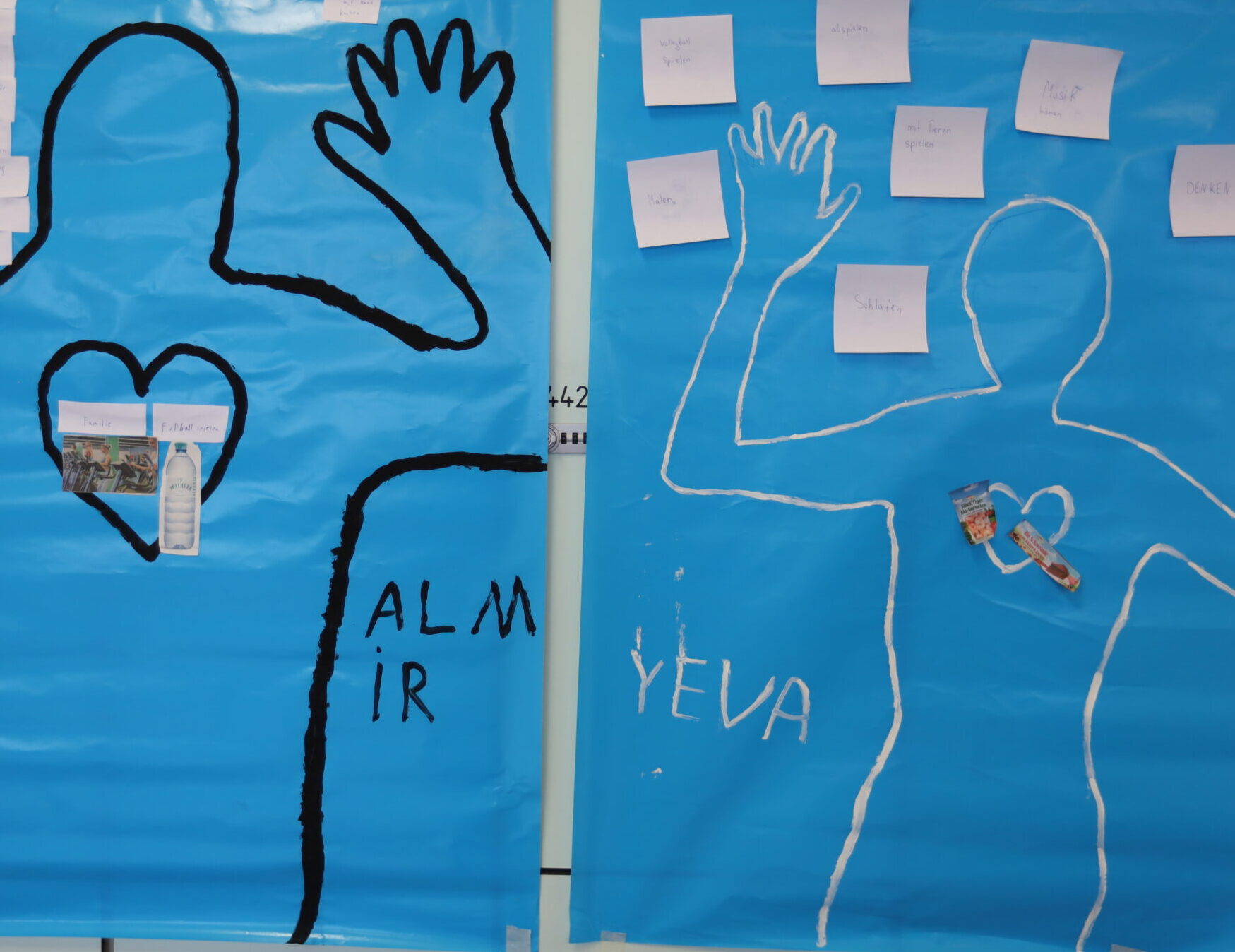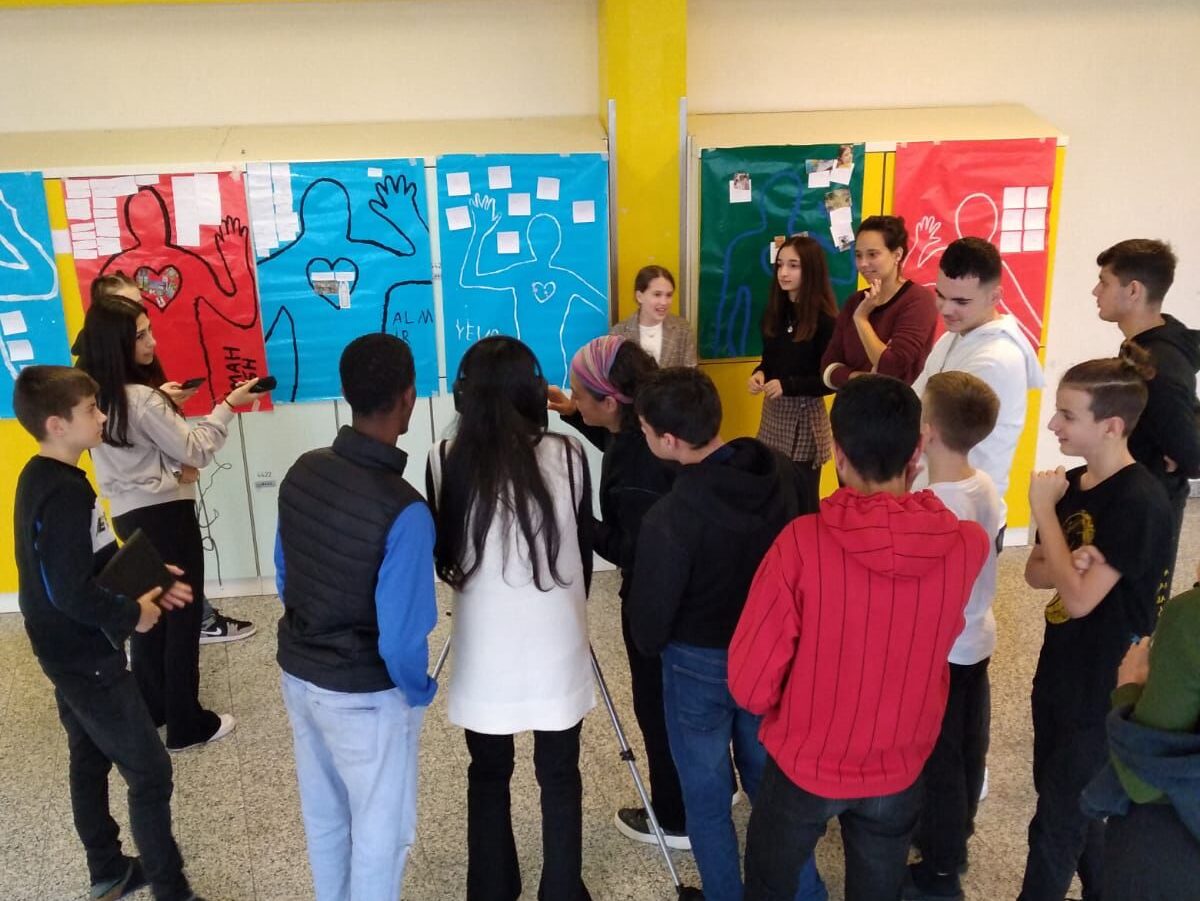
The pupils drew the contour (frame) of their bodies onto a big poster with the help of another pupil. They reflected upon personal questions, answered them with a collage or in a written form on a post-it and glued that post-it on their frame. After, they presented their answers and poster to each other. Some pupils took the roles of recording or interviewing. After each presentation, they were asked if they had discovered anything they had in common with the presenter. Further, on a voluntary basis, they were interviewed about general questions about their life at school and their everyday routines.
The goal of the action was to connect the pupils with their inner world, make this inner world visible and, in that way, connect with other pupils of the classroom.



The study area focuses on mapping the internal landscape, specifically the emotional and inner landscapes of students aged 12-15 years old in an MSK (multilevel) Class.
These activities helped to map the verbal, practical and social abilities of the children, social groups inside the class, levels of extroversion and introversion, amongst other aspects. It helped to integrate class as well, since they trained to listen, cooperate and take roles proactively.
The collaborative experience involves a creative action that integrates artistic creation and mapping. It encompasses emotional and physical dynamics through activities such as drawing, collage-making, and interviews. The methodology used helps to map verbal, practical, and social abilities of the students, identify social groups within the class, and explore levels of extroversion and introversion.
Big posters, pencils, finger paint, questionnaire, Post-its, pictures from magazines for collages, glue, writing utensils, tape, filming camera, microphone, recorder
With the aim of getting to know each other better, the pupils were invited to draw their contour (frame) of their bodies onto a big poster with the help of another pupil (first with a pencil and then with fingerpaint). They reflected upon personal questions, answered them in a written form on a post it and glued that post it on a symbolic place of their frame (for example, the hand for what they do best or what they like to do). They were motivated by the idea of presenting themselves to others and making their internal world visible.
During the second session, they were invited to paint the shape of a heart on the chest area of their frame and to fill it with a collage that would show what is important to them in life with images. In the third session, they presented their answers and poster to each other. On a voluntary basis, some of them were filmed by other pupils of the class. After each presentation, they were asked if they had discovered anything they had in common with the presenter. Further, on a voluntary basis, they were interviewed about general questions about their life at school and their everyday routines.
Due to the project, the pupils changed the way they introduced themselves by using new vocabulary and adding more information than before the exercise.
At the end of the project, pupils were asked what they had learned about their classmates. They were able to identify hobbies in common, common languages and values. Reflecting upon this last aspect, the group realized that family and friends were important to the majority of its members.

